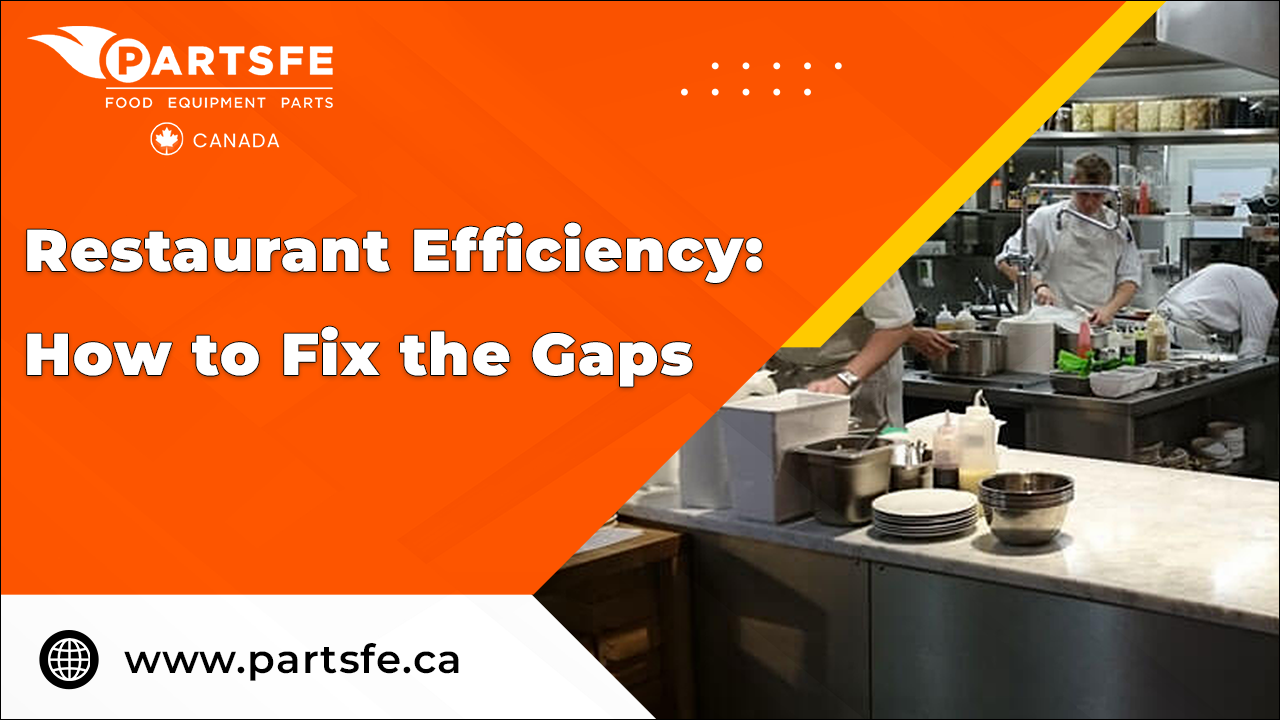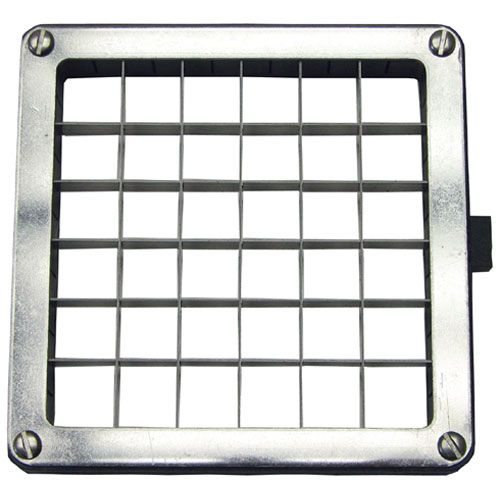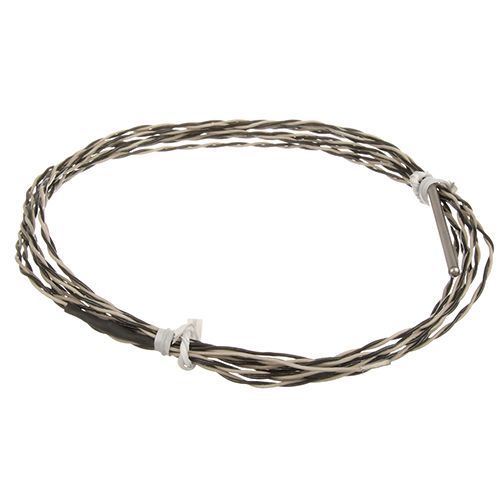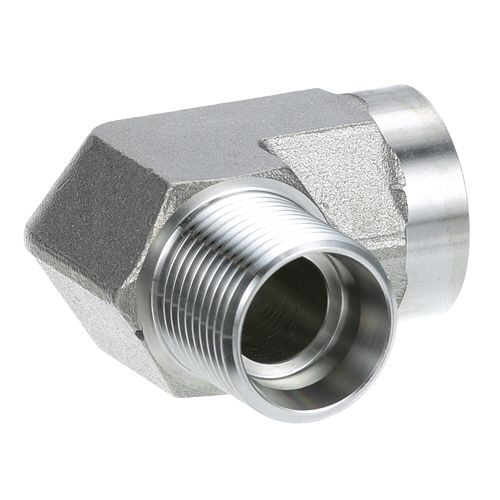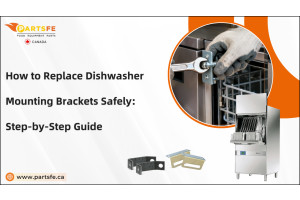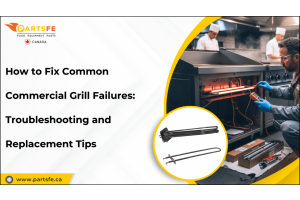Restaurant Efficiency: How to Fix the Gaps
In the competitive world of restaurants, operational efficiency is paramount. Whether you're running a small café or a large fine-dining establishment, maintaining smooth operations can make or break your success. The key to a profitable and well-functioning restaurant lies in its ability to deliver exceptional service, high-quality food, and a seamless customer experience—all while managing costs and resources effectively.
In this article, we’ll dive deep into the concept of restaurant efficiency, examine the common operational gaps that affect it, and provide actionable solutions to fix those gaps. If you're looking to improve your restaurant's efficiency, this guide will help you identify the problems, implement the right strategies, and optimize your workflow.
How to Maximize Restaurant Efficiency and Boost Profitability
Restaurant efficiency offers the operational capability for delivering superior food and service delivery with optimized resource use. The entire restaurant operation including kitchen management and staff organization and inventory tracking and customer service and business procedures falls under restaurant efficiency. The optimization of operations produces better customer satisfaction and decreases operational expenses and enhanced profitability.
Why is Restaurant Efficiency Important?
-
Cost Control: The management of restaurant expenses includes food costs alongside labor costs and overheads and other related expenses. Efficient management systems help organizations decrease their operational waste and maximize their resource distribution which controls their total expenses.
-
Customer Satisfaction: A well-organized restaurant operation delivers quick service combined with superior food quality and enhanced dining experience to satisfy customers who become loyal patrons.
-
Employee Productivity: The combination of efficient restaurant operations creates content workers who deliver better service while reducing staff turnover.
-
Profitability: The operational efficiency influences profitability indicators in the company's financial results. The increased efficiency of a restaurant enables it to handle more customers while maintaining stable operational expenses thus generating higher profits.
Also read on: Restaurant Technology: Predicting the future in the year 2030
How to Spot and Fix Common Operational Gaps in Your Restaurant
Every restaurant maintains its individuality but shares multiple operational efficiency gaps that affect most eateries. The initial step for restaurant performance enhancement requires the identification and resolution of these gaps.
Poor Inventory Management
A restaurant faces its biggest operational challenge when it comes to inventory management. The management of inventory without efficiency creates three problems: spoiled food products, excessive stock levels and insufficient stock levels that cause both waste and missed sales opportunities.
Solution: A restaurant inventory management system will help organizations achieve better inventory control. Such inventory management systems provide ongoing inventory visibility while suggesting future buying patterns together with automatic ordering capabilities. The establishment can maintain proper ingredient stock levels by establishing par levels for each item which minimizes the chance of running out of essential materials.
Slow Table Turnover
The speed with which your restaurant serves customers alongside seating them at peak traffic times determines table turnover. A low turnover rate results in reduced customer numbers which leads to lost revenue opportunities. Extended waiting periods between seatings and meal service will cause customers to leave permanently with adverse reviews damaging your business reputation.
Solution: Front-of-house (FOH) operations need proper optimization to succeed. A reservation management system combined with staff training for efficient guest seating will enhance the overall process. A smooth flow between kitchen operations and server communication will help food reach customers faster thus shortening their wait times.
Inconsistent Quality and Service
Restaurant owners and their guests experience the most critical problems when food quality and service delivery remain inconsistent. Customers tend to avoid returning to establishments that fail to deliver satisfactory food quality or provide slow or impolite service.
Solution: To guarantee consistent service delivery standardization must occur in the preparation methods for food items along with portion sizing standards and staff service procedures. Staff members need proper training to understand their duties and responsibilities. A restaurant operations manual serves to sustain these standards through its detailed instructions about handling various tasks including cooking and customer interactions.
High Employee Turnover
High employee movement represents a critical operational problem for the restaurant sector. Company operations face disruption when employee turnover becomes high thus causing team morale to decline and resulting in further expense for training new personnel.
Solution: Providing strategies to keep employees will decrease the number of workers leaving the company. Your staffing success will improve when you provide rewards that compete with local industry standards and medical coverage benefits to professionals who excel at their jobs. Employees who receive positive work cultures along with growth chances and consistent feedback tend to perceive more value in their employment relationships thus extending their tenure.
Lack of Data-Driven Decision Making
Restaurateurs persist with using intuition and outmoded techniques to make their organizational choices. When data is imprecise it becomes impossible to locate operational weaknesses while also making wrong decisions plus tracking development.
Solution: Building your restaurant management system with analytics tools embedded inside it enables you to gain important strategic insights about your business operations. The collection of sale data along with labor cost information and inventory monitoring along with customer behavior assessments enables businesses to base operational improvements on evidence-based decisions which lead to better efficiency and business growth.
Also read on: How to Overcome Most Common Restaurant Issues & Solutions: Expert Insights
How to Bridge Operational Gaps and Enhance Restaurant Performance
Efficient restaurant operations remain essential to achieve maximum efficiency, customer satisfaction, and generate higher profits. Operational gaps develop easily because of miscommunication and inefficient processes as well as poor resource management. Effective resolution of such operational areas demands both strategic implementation and modern operational tools. The following is a complete process that explains how to bridge these gaps while improving restaurant performance levels:
Identify and Analyze Operational Gaps
The process of enhancing operational efficiency begins with identifying performance gaps which affect your restaurant. Your restaurant operations contain multiple gaps which can appear in any section including kitchen workflow and inventory management and employee scheduling and customer service.
-
Conduct a full audit: A thorough examination of your entire business operations must be performed. Gather information about operational challenges by speaking with FOH and BOH staff members.
-
Analyze performance metrics: You should use your POS data to evaluate performance indicators consisting of table cycle times along with staff operation speed together with mean order volume.
-
Listen to customer feedback: Registering to customer feedback helps expose situations where service quality or food quality diminishes.
Streamline Communication Between FOH and BOH Teams
The lack of effective communication between restaurant staff who work in front-of-house and those who work in back-of-house stands as the primary operational weakness in restaurants. The absence of clear communication between FOH and BOH teams results in delayed service and incorrect orders and coordination problems that create negative impacts on customer satisfaction. The establishment of smooth communication pathways between FOH and BOH teams represents the solution to close this operational gap.
-
Implement a kitchen display system (KDS): The implementation of a kitchen display system (KDS) enables direct POS system order transmission to the kitchen which eliminates handwritten tickets while reducing order errors.
-
Use communication tools: Digital communication tools such as walkie-talkies and restaurant apps including Slack or Microsoft Teams enable FOH and BOH teams to maintain contact particularly during busy service periods.
-
Regular team meetings: Daily or weekly team meetings should be conducted to maintain staff alignment regarding daily operations and specials and menu and workflow modifications.
Optimize Employee Scheduling and Labor Management
Excessive employee staffing combined with not having enough workers constitute substantial operational inefficiencies which waste organizational funds. The right number of staff must be present at each time slot to serve customers while staying within budget constraints. The successful management of labor operations remains vital for restaurant profitability alongside performance achievement.
-
Use scheduling software: The scheduling software 7shifts and HotSchedules helps you predict high traffic times and create staff work schedules according to sales history and weather prediction data.
-
Cross-train employees: Your employees should receive training for both front-of-house and back-of-house responsibilities to create flexible scheduling options. The system helps minimize operational delays that occur when customer traffic is low.
-
Track labor costs: You should track labor costs by observing their percentage relation to sales numbers. Labor expenses should maintain a sensible percentage of total sales which ranges from 25% to 35%.
Streamline Menu Design and Preparation
Restaurant operations slow down due to a complex menu structure together with numerous offerings which causes food waste while making it difficult for customers to navigate their choices. Lesson your menu options and your business will experience increased operational speed and lower expenses together with a more concentrated customer dining experience.
-
Simplify your menu: Centrify your menu by including core selections which support your restaurant idea and can be ready within a short time. Eliminate menu items which fail to enhance customer experience value.
-
Standardize recipes: Standardization of recipes happens through creating exact duplicates of each dish and portion size. The restaurant achieves higher structural efficiency and better food quality because of its standardized procedures.
-
Implement batch cooking: The restaurant should perform batch cooking operations by preparing multiple ingredients in advance during slow times to decrease preparation duration during busy hours.
Leverage Technology to Automate and Track Operations
Restaurant performance transformation becomes possible through the application of technology systems. Automated routines with key performance tracking allows businesses to cut down work hours while decreasing mistakes while making smarter decisions.
-
Use restaurant management software: Restaurant management software should be used to handle reservations alongside inventory management and orders and employee scheduling from a single platform. Such systematic integration enables continuous operational efficiency while minimizing errors in the process.
-
Adopt POS with reporting capabilities: Organizations should choose POS systems that offer real-time tracking of sales patterns and inventory requirements and customer preference data through their reporting functions.
-
Implement automated inventory management: A software system that tracks inventory automatically helps businesses avoid stockout occurrences and overstock situations. By having your inventory at hand you minimize waste along with meeting your needs during operations.
Improve Customer Service Through Staff Training
Staff training represents an effortless method to close operational gaps while improving restaurant performance. A properly trained staff team delivers efficient work alongside effective communication and consistently high-quality service that creates delighted customers.
-
Regularly train staff: Staff training should be a continuous process which includes instruction about customer service alongside food safety and operational procedures. Staff members stay current on all new processes and technology because of regular training procedures.
-
Set clear expectations: Your restaurant needs clear guidelines which define the expectations for every team member role. Performance standards need definition to help employees understand their work requirements.
-
Encourage teamwork: Create a team-based workplace which promotes mutual assistance between staff members. The establishment operates more efficiently during busy times because of this approach.
Track Key Performance Indicators (KPIs)
Every restaurant needs key performance indicators (KPIs) to measure achievement. Your restaurant can enhance operations and pinpoint difficulties while enhancing performance results through systematic examination of these measurement indicators.
-
Monitor key metrics: Regulate Your Business Through Regular Evaluation Of Average Ticket Size And Table Turnover Periods With Food Expenses And Labor Charges And Customer Opinion Ratings.
-
Use analytics tools: Your POS system should integrate analytics software which produces reports about your KPIs. The data provides you with necessary information to make strategic operational adjustments.
-
Regularly review performance: Perform quarterly assessments and monthly evaluations of performance to achieve progress goals and set new targets. Your restaurant will maintain its direction while improving through this method.
Enhance Marketing and Customer Retention
Your approach toward customer engagement constitutes part of operational gaps between your business and customers. By developing sound marketing alongside retention systems which maintain customer loyalty you can increase sales and retain clients thereby advancing restaurant success.
-
Utilize social media: Facebook and Instagram should be used to actively connect with customers through their social media platforms. Publishing your promotions together with new menu items and customer feedback allows customers to remember your brand.
-
Create loyalty programs: Develop a loyalty system with rewards such as price deductions along with complimentary goods and distinct member benefits for regular clients. The implementation of customer retention strategies leads to better customer loyalty which results in increased customer visits.
-
Collect and act on feedback: Your business should receive customer feedback which serves as the foundation to develop better product capabilities. You should introduce changes in your business which come directly from your customers' requests no matter if it means changing food options or upgrading your customer service.
The maintenance of competitive strength within restaurants heavily depends on operational efficiency in an industry with multiple difficulties. The improvement of operational gaps will generate workflow enhancements and lower costs together with elevated customer satisfaction and enhanced profitability. Each tiny aspect matters significantly in the effort to enhance efficiency in your restaurant.
Continuous attention along with regular adjustments are necessary to maintain an ongoing process of efficiency improvement. Your restaurant will achieve success through the combination of technological adoption and empowered staff members and data-driven decision-making. Execute these methods now to see your restaurant experience both better efficiency and better profitability.
Boost your restaurant’s efficiency with PartsFe CA! We offer high-quality replacement parts for top kitchen brands like Viking, Wolf, and Turbo Air. Whether you need oven elements, compressors, or thermostats, we provide reliable solutions to keep your equipment running smoothly. Shop now for the best parts at competitive prices!
FAQs
What is the gap analysis for the restaurant?
Conducting a GAP analysis is crucial for businesses in this sector to identify areas for growth and optimization. This analysis will explore the current state of the industry, ideal future scenarios, and the actions needed to bridge the gap between the two.
What is a gap filling strategy?
Gap filling involves retracing prices to the pre-gap level, influenced by factors like patterns and resistance. Caution is needed when trading common gaps, and thorough research ensures profitable gap strategies.

